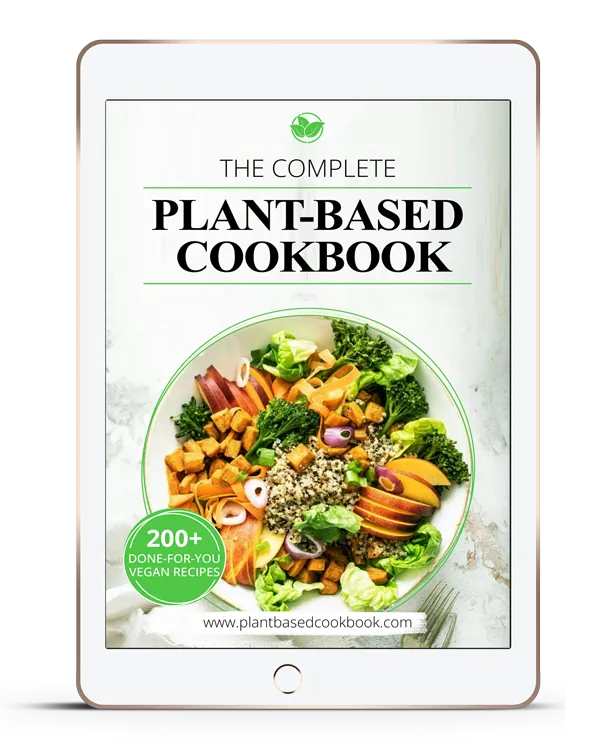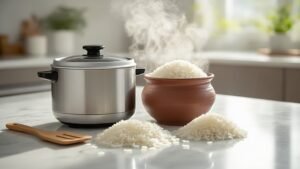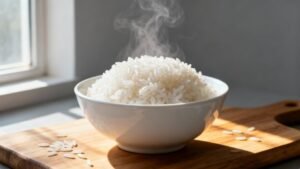Have you ever found yourself craving a delicious and healthy bowl of brown rice, only to realize that you forgot to soak it beforehand? Don’t worry, you’re not alone! Many people believe that soaking brown rice is necessary to achieve the desired texture and taste. However, I’m here to tell you that you can indeed cook brown rice without soaking and still enjoy perfectly cooked grains every time.
Let me share a little story with you to set the stage for our no-soak brown rice cooking adventure. Picture this: it’s a busy weeknight, and you come home after a long day at work. You’re tired, hungry, and in need of a quick and nutritious meal. You remember that you have a bag of brown rice in your pantry, but the thought of soaking it and waiting forever for it to cook seems overwhelming.
But fear not! With the help of this quick guide on cooking brown rice without soaking, you can whip up a delicious meal in no time. Whether you prefer stovetop cooking or using a rice cooker, I’ll walk you through the step-by-step process to achieve fluffy and flavorful brown rice without the need for soaking.
So, put away your soaking bowl and let’s get ready to cook up some amazing, no-soak brown rice recipes that will satisfy your cravings and make your weeknight dinners a breeze.
Table of Contents
TogglePreparation Techniques for No-Soak Brown Rice
Before cooking brown rice, it is important to consider a few preparation techniques. One common question is whether it is necessary to wash brown rice before cooking. While rinsing rice can help remove any impurities or dust, it is not strictly necessary for brown rice. However, rinsing the rice once can remove light amounts of dirt and surface bad rice grains.
Another important factor to consider is the correct water-to-rice ratio. While most sources suggest a 1:2 ratio for white rice, brown rice tends to require slightly more water. It is generally recommended to use a 1:2.5 ratio of uncooked rice to water for cooking brown rice without soaking.
“Rinsing the rice once can remove light amounts of dirt and surface bad rice grains.”
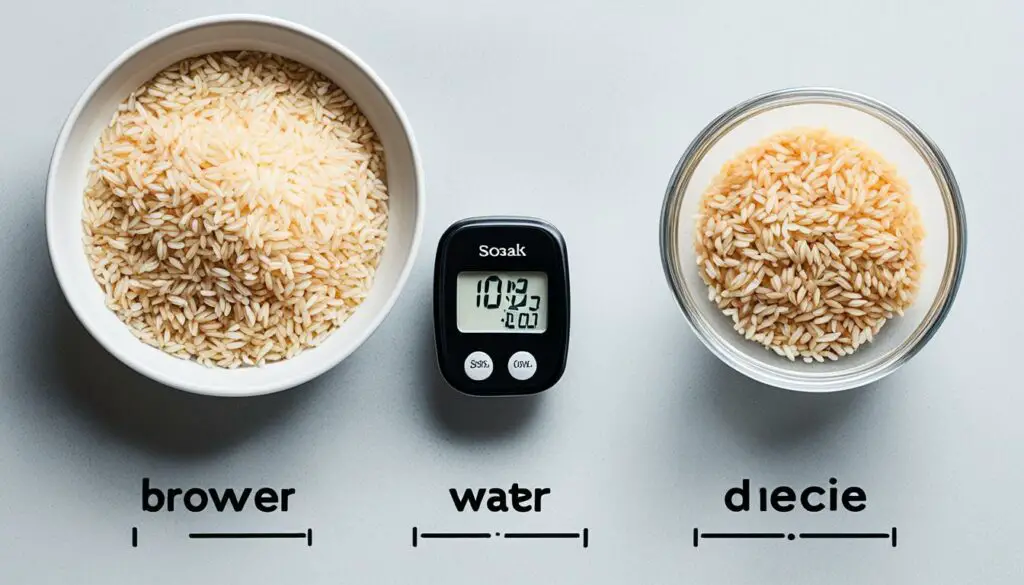
| Uncooked Brown Rice | Water |
|---|---|
| 1 cup | 2.5 cups |
| 2 cups | 5 cups |
| 3 cups | 7.5 cups |
Using the recommended water-to-rice ratio ensures that the brown rice cooks evenly and produces a fluffy texture. It is important to note that different brands or varieties of brown rice may require slight adjustments to the water-to-rice ratio, so you may need to experiment and adjust accordingly.
How to Cook Brown Rice on the Stovetop
Cooking brown rice on the stovetop is a straightforward method that does not require soaking. To cook brown rice on the stove, start by rinsing the rice and determining the correct water-to-rice ratio. Then, bring the water to a boil, add the rice, and lower the heat to a simmer. Cover the pot and cook until all the water has evaporated and the rice is cooked through. Let the rice sit covered for a few minutes before fluffing it with a fork. This stovetop method produces perfectly cooked brown rice without the need for soaking.
“Cooking brown rice on the stovetop is a great way to achieve perfectly cooked grains – fluffy, with a slightly chewy texture. It requires minimal effort and yields delicious results.”
When cooking brown rice on the stovetop, it’s important to follow a few key steps for optimal results. Start by rinsing the rice under cold water to remove any excess starch. This will help prevent the grains from sticking together while cooking.
Next, determine the correct water-to-rice ratio. For stovetop cooking, a general guideline is to use 2 ½ cups of water for every 1 cup of uncooked brown rice. However, it’s always a good idea to check the package instructions as different rice varieties may require slight adjustments in the water amount.
Bring the water to a boil in a medium-sized pot. Once boiling, add the rinsed brown rice and stir to prevent sticking. Lower the heat to a simmer and cover the pot. Allow the rice to cook for approximately 40-45 minutes, or until all the water has been absorbed.
Once the rice is fully cooked, remove the pot from the heat and let it sit, covered, for an additional 5-10 minutes. This resting time allows the steam to evenly distribute throughout the rice, resulting in a fluffier texture.
After the resting time, uncover the pot and fluff the rice gently with a fork. This helps separate the grains and prevents clumping.
Now, your stovetop cooked brown rice is ready to be served alongside your favorite dishes. Enjoy!
| Rice Variety | Water-to-Rice Ratio | Cooking Time |
|---|---|---|
| Long Grain Brown Rice | 2 ½ cups water per 1 cup rice | 40-45 minutes |
| Short Grain Brown Rice | 2 ¾ cups water per 1 cup rice | 45-50 minutes |
| Medium Grain Brown Rice | 2 ½ cups water per 1 cup rice | 40-45 minutes |
Utilizing a Rice Cooker for Perfect Brown Rice
A rice cooker is a convenient and foolproof method for cooking brown rice without the need for soaking. It simplifies the cooking process and ensures consistent results every time. When using a rice cooker to cook brown rice, there are two important factors to consider: water levels and adjusting the settings for different rice cooker models.
Brown Rice Cooking Water Levels
One of the key aspects of cooking brown rice in a rice cooker is determining the correct water levels. Unlike white rice, brown rice requires more water to fully absorb and cook properly. Most rice cookers have specific water level lines or markings for brown rice.
It is essential to add the appropriate amount of water to ensure that the brown rice cooks evenly and is not too dry or mushy. Adding too little water can result in undercooked rice, while adding too much water can make the rice overly soft and sticky.
Adjusting Settings for Different Rice Cooker Models
While most rice cookers have a standard cook setting, different models may have specific settings or presets for cooking brown rice. It is important to consult the manufacturer’s instructions or user manual to determine the correct settings for cooking brown rice in your specific rice cooker.
Adjusting the settings according to the manufacturer’s instructions is essential for achieving perfectly cooked brown rice. These settings may include variations in cooking time, temperature, or other settings tailored specifically for brown rice. Following the recommended settings will help ensure that the brown rice is cooked to perfection.
To summarize, using a rice cooker is a convenient and reliable method for cooking brown rice without soaking. By determining the correct water level for brown rice and adjusting the settings according to your rice cooker model, you can achieve perfectly cooked brown rice with minimal effort.
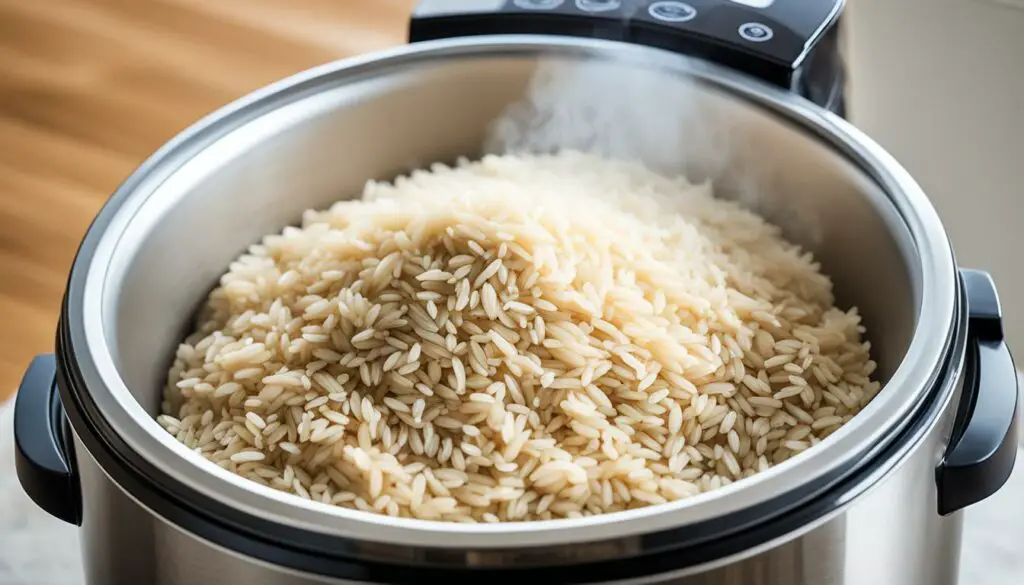
Understanding Brown Rice: Health Benefits and Cooking Comparison
Why Choose Brown Rice Over White Rice?
Brown rice is a popular choice for those seeking a healthier alternative to white rice. It offers numerous health benefits that make it a nutritious addition to any diet. Unlike white rice, which has gone through a refining process that removes the bran and germ layers, brown rice retains these nutrient-rich components.
One of the primary reasons to choose brown rice over white rice is its higher fiber content. Fiber plays a crucial role in maintaining a healthy digestive system and can help prevent constipation. Additionally, brown rice contains more vitamins and minerals, including B vitamins, magnesium, and selenium, compared to white rice.
Another significant advantage of brown rice is its effect on blood sugar levels. The fiber and complex carbohydrates in brown rice contribute to a slower release of glucose into the bloodstream, preventing sudden spikes in blood sugar. This makes brown rice a suitable choice for individuals with diabetes or those looking to manage their blood sugar levels.
Overall, choosing brown rice over white rice is an excellent way to incorporate more nutrients and fiber into your diet, contributing to better overall health.
Nutritional Advantages of Brown Rice
Brown rice is a nutrient-dense grain that provides several nutritional advantages. Compared to white rice, brown rice contains higher levels of fiber, vitamins, and minerals. Let’s take a closer look at the nutritional benefits of brown rice:
| Nutrient | Brown Rice | White Rice |
|---|---|---|
| Fiber (per 100g) | 2.8g | 0.3g |
| Vitamin B6 | 0.27mg | 0.06mg |
| Magnesium | 43mg | 6mg |
| Selenium | 10.0mcg | 13.7mcg |
As seen in the table above, brown rice contains significantly higher levels of fiber, vitamin B6, magnesium, and selenium compared to white rice. These nutrients play essential roles in maintaining heart health, supporting brain function, and boosting the immune system.
Soaking vs Non-Soaking Rice Cooking Methods
When it comes to cooking brown rice, you have the option to soak or not to soak before cooking. Both methods can produce delicious brown rice, but they offer different advantages:
“Soaking the rice can help reduce cooking time and improve the texture, while non-soaking methods offer convenience and ease of preparation.”
Soaking brown rice before cooking can help shorten the cooking time. It allows the grains to absorb water, making them softer and more tender. Soaking also helps break down the phytic acid present in the rice, which can make nutrients more accessible to the body.
On the other hand, non-soaking methods offer convenience and simplicity. By cooking brown rice directly without soaking, you can save time and effort in the kitchen. This method is ideal for those who prefer a quicker cooking process or don’t have the time to soak the rice in advance.
- 15 Pound Package
- California medium grain rice
- A great choice for everyday consumption
- All natural
- Raised in California
Conclusion
In conclusion, cooking brown rice without soaking is a simple and convenient method that can yield delicious and fluffy results. By following the preparation techniques for no-soak brown rice and utilizing various cooking methods such as stovetop cooking and using a rice cooker, you can enjoy perfectly cooked brown rice without the need for soaking.
Brown rice is not only a flavorful and versatile grain, but it also offers numerous health benefits. Compared to white rice, brown rice contains more fiber, vitamins, and minerals. It is also digested more slowly, leading to a slower rise in blood sugar levels. With its nutritious bran and germ layers intact, brown rice is a nutritious alternative that can be easily incorporated into your meals.
Whether you choose to soak or not, cooking brown rice without soaking is a hassle-free way to enjoy the nutritional benefits of this healthy grain. So go ahead and whip up a delicious batch of brown rice using the techniques shared in this guide. Your taste buds and your body will thank you!
FAQ
Is it necessary to wash brown rice before cooking?
While rinsing rice can help remove any impurities or dust, it is not strictly necessary for brown rice. However, rinsing the rice once can remove light amounts of dirt and surface bad rice grains.
What is the correct water-to-rice ratio for cooking brown rice without soaking?
It is generally recommended to use a 1:2.5 ratio of uncooked rice to water for cooking brown rice without soaking.
How do I cook brown rice on the stovetop without soaking?
Rinse the rice, determine the correct water-to-rice ratio, bring the water to a boil, add the rice, lower the heat to a simmer, cover the pot, and cook until all the water has evaporated and the rice is cooked through. Let the rice sit covered for a few minutes before fluffing it with a fork.
How do I utilize a rice cooker to cook brown rice without soaking?
Determine the correct water levels for cooking brown rice in the rice cooker, add the appropriate amount of water according to the manufacturer’s instructions, and adjust the settings for brown rice if necessary.
Why should I choose brown rice over white rice?
Brown rice offers numerous health benefits compared to white rice, including more fiber, vitamins, minerals, and slower digestion, leading to a slower rise in blood sugar levels.
What are the nutritional advantages of brown rice?
Brown rice retains the nutritious bran and germ layers, which contain additional nutrients and fiber compared to white rice.
What is the difference between soaking and non-soaking rice cooking methods?
Soaking rice can help reduce cooking time and improve the texture, while non-soaking methods offer convenience and ease of preparation.
Source Links
- https://thewoksoflife.com/how-cook-brown-rice/
- https://www.forksoverknives.com/how-tos/cook-perfect-pot-brown-rice/
- https://www.alphafoodie.com/how-to-cook-brown-rice-perfectly-every-time/
Last update on 2025-10-15 / Affiliate links / Images from Amazon Product Advertising API



